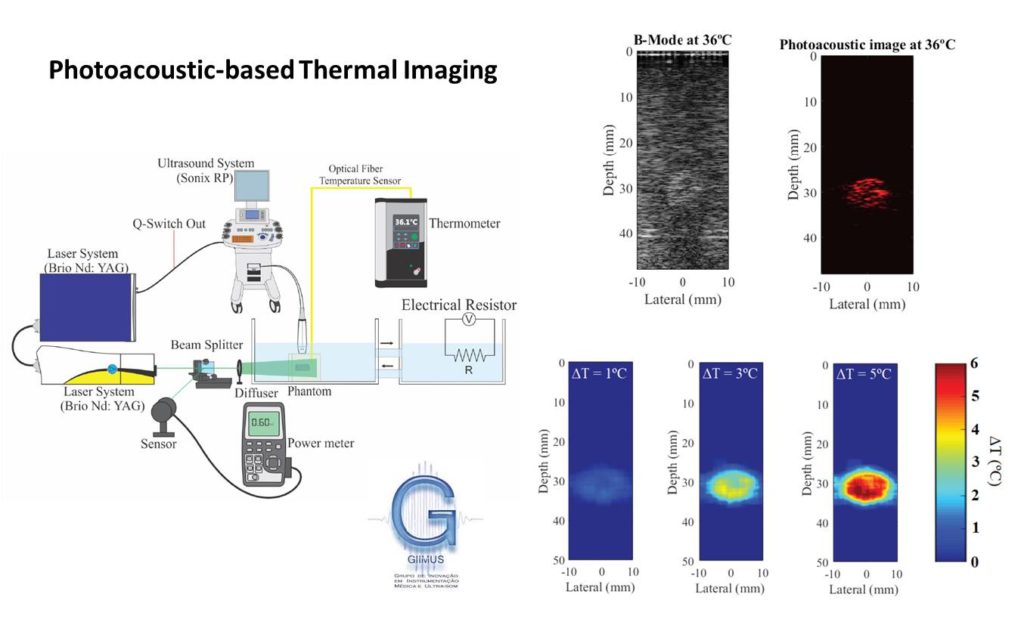Photoacoustic Imaging
The photoacoustic effect, discovered by Alexander Graham Bell in the late 19th century, refers to the generation of sound waves due to the absorption of electromagnetic radiation by a material, resulting in a localized response that produces pressure waves due to thermoelastic expansion caused by the rapid increase in temperature at that point. In recent years, photoacoustics has been explored as a non-invasive biomedical imaging technique, using non-ionizing radiation and endogenous contrast agents such as melanin and hemoglobin, allowing for imaging at considerable depths and functional information of the organism, such as oxygen saturation. Despite being a relatively new modality, photoacoustics has gained prominence in the last decade, evidenced by a significant increase in publications in the field, establishing itself as an important modality for both current and future imaging.
Our research in photoacoustics focuses on image reconstruction methods, structure localization, and enhancement of photoacoustic signal contrast using nanoparticles, as well as spectroscopy and photoacoustic microscopy techniques, along with clinical applications in in vitro, ex vivo, and in vivo studies.


Guilherme Pilotto
PhD Student

